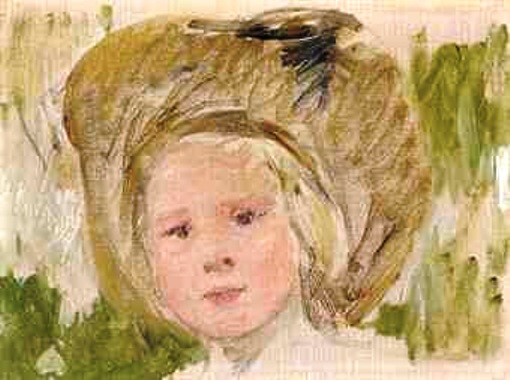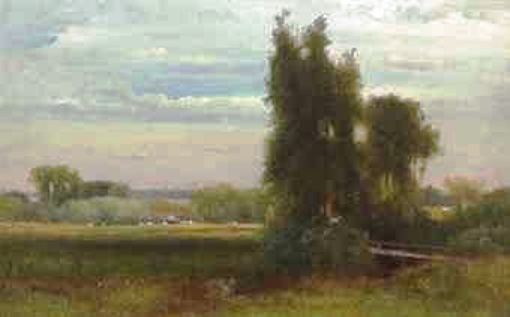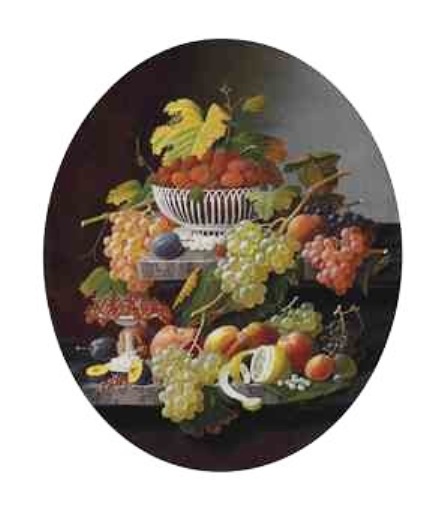Tuesday, April 24, 2012
Rare Early 19th Century Portrait of an African-American by Charles Willson Peale
The Philadelphia Museum of Art has acquired the painting Yarrow Mamout, 1819, an exceptionally rare portrait of an African-American by Charles Willson Peale (1741-1827), one of the most renowned American artists of the late 18th and early 19th centuries. Depicting an aged man who had been born in Guinea in western Africa, taken into slavery in the American colonies and later manumitted, or freed by his owner, it is one of the very earliest known works to depict a freed slave in the United States and the earliest known painting of a Muslim in America. Upon its completion, Yarrow Mamout was exhibited at Peale’s Museum, in Independence Hall in Philadelphia, where it could be seen alongside other works by the artist and his son Rembrandt that represented George Washington, Thomas Jefferson, Benjamin Franklin, Lewis and Clark, David Rittenhouse, and many other accomplished individuals. Measuring 24 x 20 inches, this new acquisition has today been placed on view at the Philadelphia Museum of Art, just off the Great Stair Hall in the first gallery toward the American Wing. It has been purchased from the Philadelphia History Museum at the Atwater Kent.
“The name Charles Willson Peale is closely associated with Philadelphia’s prominence as the leading artistic center in late 18th- and early 19th-century America,” said Timothy Rub, the George D. Widener Director and Chief Executive Officer of the Philadelphia Museum of Art. “Although Peale’s work is well represented in our collection, his portrait of Yarrow Mamout is distinctive by virtue of the fact that it is one of the earliest and certainly one of the most sympathetic portraits of an African-American to be found in the history of American art. Peale was especially drawn to this remarkable man, not only because of his advanced age (he was reputed to be 140 years old) but also because of his remarkable personal history: a freed slave who had achieved prosperity and was well known to the citizens of Washington, D.C., where the artist painted this portrait. It is an exceptional painting that tells an equally exceptional story.”
Peale’s Museum, which is widely acknowledged by historians to have been the first museum in the United States, occupied the upper floors and tower of Independence Hall from 1802 until 1827. In 1854, when its collections were dispersed, the portrait of Yarrow Mamout was misidentified and auctioned as “Washington’s servant” to Charles S. Ogden, who donated the picture to the Historical Society of Pennsylvania in 1892. The painting entered the collection of the Philadelphia History Museum in 1999 when it received by transfer much of the HSP’s collection of art and artifacts. Peale was nearly 80 years old when he went to Washington, D.C., to lobby for federal funding for his museum and to paint “portraits of distinguished public characters” such as Andrew Jackson, John Quincy Adams, and Henry Clay for his portrait gallery. Along with his dedication to healthy habits, Peale had a keen and abiding interest in longevity, and while in Washington he heard of a former slave said to be nearly 140 years old. Peale went out of his way to find and paint Yarrow Mamout at the home that Mamout owned in Georgetown. Modern research shows that Mamout, a Muslim from Guinea and literate in Arabic, was taken into bondage in the colonies about 1752 and freed after 45 years in slavery. He was not as old as Peale believed him to be, but his sprightly condition at such an advanced age (probably about 83) was remarkable for this period. His name, perhaps more correctly given in West Africa as Mahmoud Yaro, is one of many variant spellings of the name of the prophet Mohammed. His knit cap, serving to keep him warm during Peale’s mid-winter portrait session, may also represent headgear from the region of Africa from which he came. Peale’s diary describes Yarrow Mamout as a cheerful man notable for his “industry, frugality, and sobriety,” and observes: “He professes to be a Mahometan, and is often seen and heard in the streets singing praises to God-- and, conversing with him, he said man is no good unless his religion comes from his heart.”
The Philadelphia Museum of Art owns the most comprehensive collection of works by Charles Willson Peale and his legendary family of artists, including his brother James, his sons Raphaelle, Rembrandt, and Titian, and his numerous grandchildren. “This painting adds a new dimension to our collection of Peale’s work at the end of his life, when he enjoyed a spectacular artistic renaissance,” said Kathleen A. Foster, the Robert L. McNeil Jr. Senior Curator of American Art. “Peale brought a lifetime of skillful and compassionate observation to bear on his representation of Yarrow Mamout, who returns his gaze warmly, with an expression of wisdom, patience, and a twinkle of solidarity in his eyes. We find it wonderful that Peale so esteemed Yarrow and added his portrait to the gallery of distinguished individuals in his museum.”
Paintings of African-American subjects by American artists are rare before 1820. The three finest and best-known in oil are Copley’s vivacious Head of a Negro (Detroit Institute of Arts) painted in England in 1777-78, perhaps as a study for Watson and the Shark; the portrait of the 1790s said to depict George Washington’s enslaved cook, Hercules, and attributed to Gilbert Stuart (Museo Thyssen-Bornemisza, Madrid); and Peale’s charismatic image of Yarrow Mamout. The only earlier portrait known to survive of a freed slave in America is that of the distinguished Reverend Absalom Jones, painted on paper eight years before the portrait of Yarrow Mamout, by Peale’s son Raphaelle (Delaware Art Museum).
The Education Department of the Philadelphia Museum of Art, which draws some 80,000 school students to the Museum each year, in particular from the Philadelphia Public Schools, is preparing a teaching poster dedicated to the portrait of Yarrow Mamout that will be distributed to classrooms throughout the region. Marla Shoemaker, the Kathleen C. Sherrerd Senior Curator of Education, stated: “This beautiful portrait reminds students and all of us of the many diverse people who helped to build our nation. Yarrow Mamout’s dignity and warmth, as portrayed by an artist who clearly admired him, will captivate and inspire students of all racial, ethnic, and religious backgrounds.”
In order to purchase this unique painting in Peale’s oeuvre, the Philadelphia Museum of Art is deaccessioning nine works from its collection of American art. Five paintings will be sold in New York on November 30 through auction at Christies, whose Chairman, Marc Porter, helped advise the Philadelphia History Museum on the sale of the Peale portrait. The remaining works, including two chairs and two Charles Willson Peale portraits, will be sold at a later date. The deaccessioned works include:
Portrait of a Lady, ca. 1915, William Merritt Chase
Mrs. John Bayard (Margaret Hodge), 1780, Charles Willson Peale
MARY STEVENSON CASSATT (1844-1926) “Sketch of Head of a Girl in a Hat with a Black Rosette,” oil on canvas laid down on board 9¾ x 12¾ in. Painted circa 1910. Estimate: $70,000-$100,000
GEORGE INNESS (1825-1894) “Italy,” oil on canvas 14½ x 20½ in. Painted circa 1872-74. Estimate: $70,000-$100,000
GEORGE INNESS (1825-1894) “Hastings (Evening Landscape),” oil on canvas 15 x 23½ in. Painted circa 1868. Estimate: $50,000-$70,000
SEVERIN ROESEN (1815-1872) “Still Life with Fruit,” oil on canvas 30 x 25 in. Painted circa 1850-70. Estimate: $60,000-$80,000
The Portrait Collection of the Peale Museum at Independence Hall
In 1782, Charles Willson Peale added a 66 foot-long gallery to his home at Third and Pine Streets in Philadelphia. It was the first sky-lit gallery in America, and by 1784 Peale was on his way to launching a formal portrait collection of prominent contemporary American military and civilian leaders. Over time he expanded the collection to include scientists, explorers, artists, and other American and European men of accomplishment. In 1786 Peale joined this collection with his newly conceived museum of natural history, and founded Peale’s Philadelphia Museum, which moved to Philosophical Hall in 1794 before expanding into Independence Hallin 1802. Portraits in the collection were painted almost entirely by Charles and his son Rembrandt. While most were bust portraits presented in gilded frames with oval inserts surrounding the image, there was also a selection of full-length portraits that included his 1779 portrait of Washington at Princeton and his 1795 double portrait of his sons, Raphaelle and Titian, now known as the Staircase Group (Philadelphia Museum of Art). Other famous individuals whose portraits were in the extensive collection by the time Yarrow Mamout’s portrait was added included Martha Washington, Jefferson, Franklin, Anthony Wayne (McNeil Collection; promised gift to Philadelphia Museum of Art), Thomas Wharton (Philadelphia Museum of Art), John Paul Jones (Independence National Historic Park), inventors David Rittenhouse (INHP) and Robert Fulton (INHP), naturalist William Bartram (INHP), philosopher and scientist Joseph Priestly, architect Benjamin Henry Latrobe (INHP), portraitist Gilbert Stuart, explorers Lewis and Clark, French sculptor Jean Antoine Houdon (Pennsylvania Academy of the Fine Arts), painter Angelica Kauffman, and the priest and advocate of racial equality Henri Gregoire.
About the Peale collection at the Philadelphia Museum of Art
The Museum’s collection now includes over 150 objects by America’s first artistic dynasty, including important recent gifts and promised gifts from Robert L. McNeil, Jr. Representing all aspects of the Peale family’s work, the Museum’s holdings include many portraits, from ambitious life-size images in oil to small jewel-like miniatures, drawings, engravings, and cut-paper silhouettes. Landscapes and works demonstrating the family’s engagement with various aspects of natural science accompany a rich selection of still life pictures by the genre’s first American masters, Raphaelle and James Peale. According to Carol Soltis, Project Associate Curator in American Art and author of the forthcoming publication on the collection, The Art of the Peales: Adaptations and Innovations, this is “a collection that showcases both the individual excellence and the communal interests of the Peales as they sought to respond to and shape the evolving tastes and interests of their American audience.”






